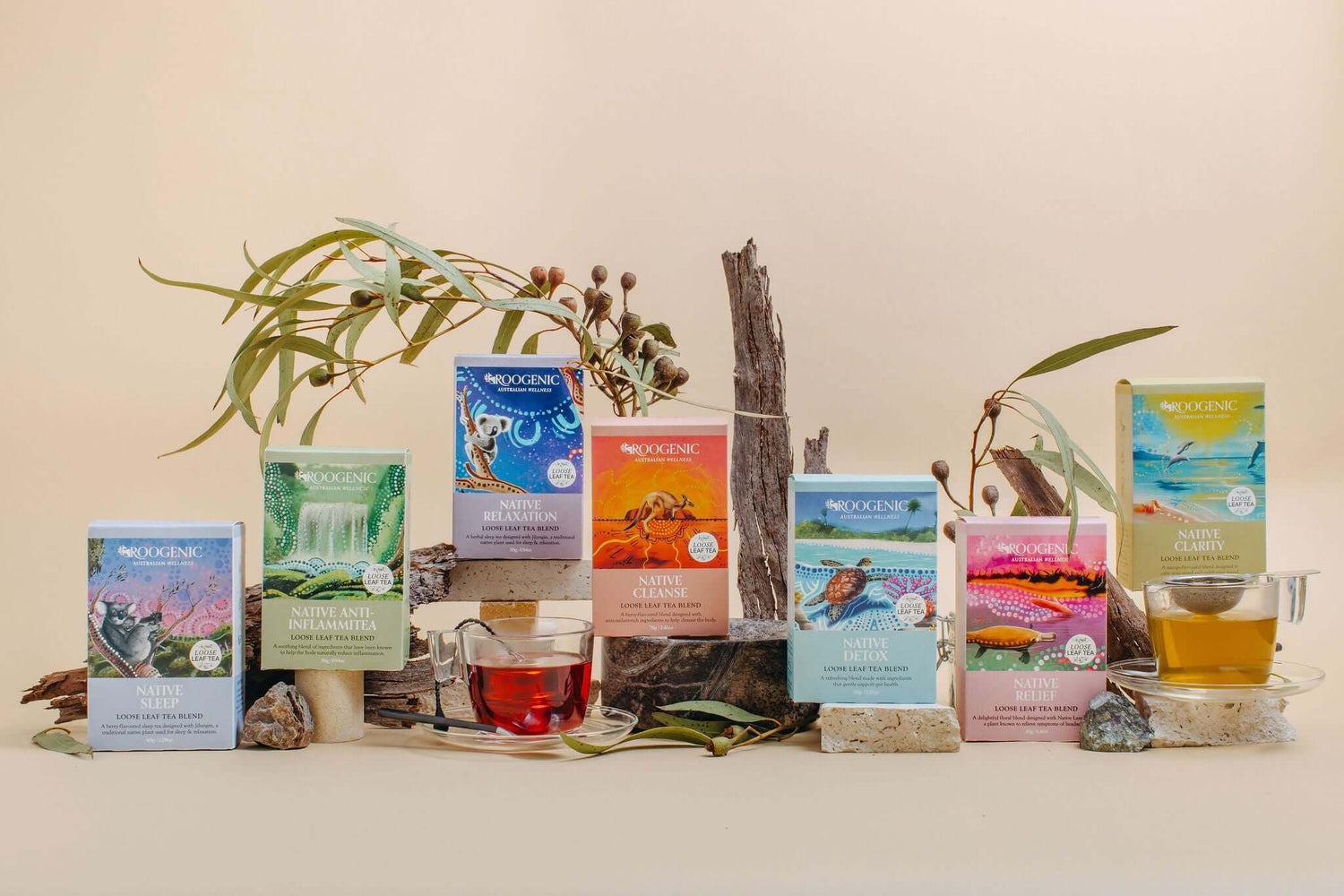Inflammation Powder is a synergistic, multi-action blend that combines antioxidant rich native bush foods Davidson's plum, Quandong and Pepperberries with Fortigel bioactive collagen peptides to promote connective tissue repair and maintenance. It also features anti-inflammatory herbs; Turmeric, Maritime pine bark and Boswellia.
Science Meets Nature: The Ingredients Behind Inflammation Superfood Powder
Turmeric, curcumin and black pepper
Roogenic anti-inflammatory powder includes Turmeric plus curcumin and black pepper to boost the anti-inflammatory potential. Turmeric is well known for its anti-inflammatory properties, this can be attributed to the polyphenols known as curcuminoids including curcumin. Curcumin has been found to have anti-inflammatory, antioxidant, anti-fungal, anti-bacterial, antiviral and wound healing properties. Research suggests that curcumin may help reduce inflammation and muscle soreness associated with exercise. The alkaloid known as piperine is an active component of black pepper that can improve the absorption of curcumin in the body. Additionally black pepper includes immune-modulating, antioxidant, anti-arthritic, and anti-inflammatory.
References: (65, 66, 67, 68, 69, 70, 71, 72, 73, 74, 75, 76, 77, 78, 79, 80, 81, 82, 83, 84, 145)
Boswellia
In addition to its anti-inflammatory and anti-arthritic properties, Boswellia also has analgesic properties. Boswellia has shown improved symptoms of knee swelling and pain associated with osteoarthritis according to research.
Pepperberry
Pepperberries contain polygodial, which has anti-inflammatory and anti-allergic properties.
Magnesium
The body uses magnesium for hundreds of enzyme reactions, including protein synthesis, muscle function and nerve function. All tissues depend on magnesium for metabolism and homeostasis (a state of balance), this includes managing inflammation. Magnesium deficiency has been associated with increased inflammation, including chronic low-grade inflammation.
References: (159, 160, 161, 162, 163, 164, 165, 166, 167, 168)




